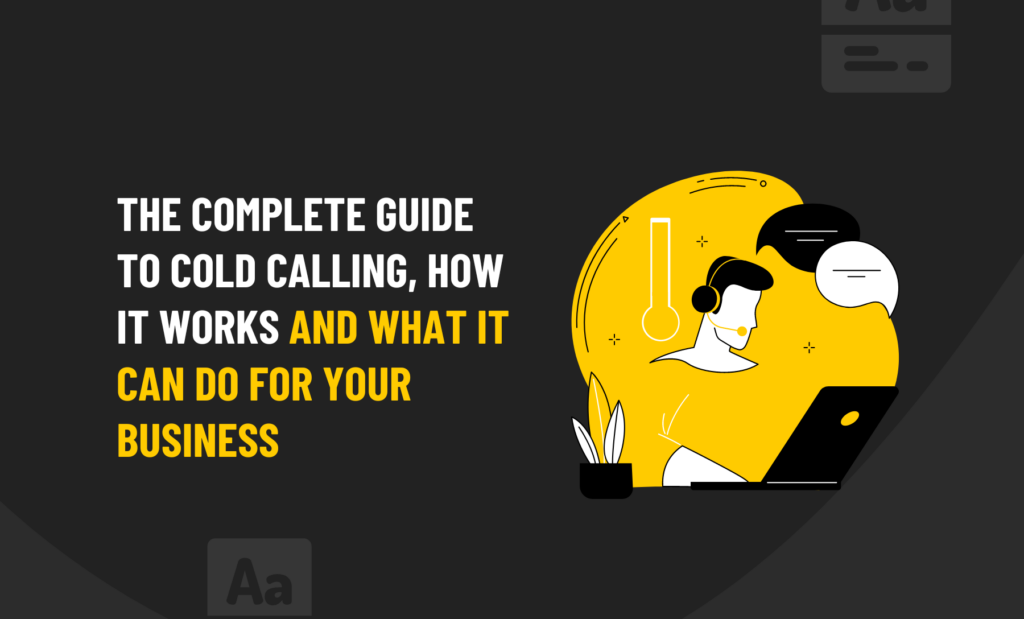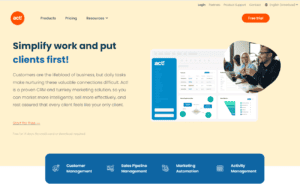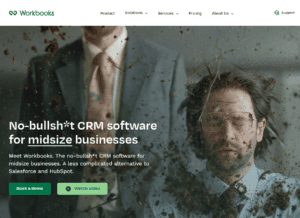Sales professionals and business owners often face the challenge of losing potential sales due to ineffective closing techniques. The frustration accompanying this common situation can only be avoided with a thorough understanding of clients’ needs, effective communication, and masterful sales strategies.
Do not fret! Assistance is at hand. In this blog, one will be discussing the top sales techniques that could help in sealing more deals and boosting revenue. Different types of sales techniques, their perks, and ways to employ these tactics in your pitch shall be addressed.

This blog is designed to help anyone looking to enhance their sales skills, regardless of their level of experience. From approaching potential customers effectively, building strong relationships based on trust and rapport, to finally sealing the deal successfully- this blog will provide you with a comprehensive understanding. By the end of your read-through, feel confident in your ability to tackle any sale that comes your way.
Benefits-focused sales techniques can assist in emphasizing the value of your product or service to potential customers. By highlighting how it can fulfill their needs and solve their problems,
When trying to gain the trust of potential customers, it’s essential to employ social proof in the form of customer reviews and testimonials. By utilizing these, businesses can build credibility

Closing more deals can be helped by utilizing techniques like creating a sense of urgency and overcoming sales objections.
- Why Building Rapport is Important for Closing Deals?
Developing a connection with potential customers is vital for achieving sales success. Salespeople who establish rapport create trust, which helps establish long-term relationships and ultimately results in more deals closed. Research suggests that prospects are far more likely to purchase from someone they respect, like, and trust. It’s therefore crucial for salespeople to focus on cultivating strong connections with their prospects to maximize the likelihood of closing deals.
When creating a connection with prospects, salespeople cannot rely on generic questions alone. Building strong rapport requires active listening, finding common ground and being empathetic towards their prospect’s needs, goals and challenges. Genuinely showing interest in understanding these aspects can help salespeople differentiate themselves from competitors and create lasting connections with their prospects.
In order to establish successful sales relationships, it’s crucial to remember that building rapport is an ongoing process rather than a one-time event. To achieve this, salespeople must be personable and interested in the prospect’s challenges at every point of contact with them- from initial meetings to the final handshake. They should nurture these relationships by maintaining regular communication even after striking a deal.

- The Importance of Active Listening in Building Rapport
- Finding Common Ground with Prospects
- The Role of Empathy in Building Stronger Connections
quotes:
When it comes to buying, people tend to choose individuals whom they view favorably and can trust. This famous quote by Zig Zig
In sales, establishing a lasting relationship with potential customers begins with building rapport. Salespeople who show empathy, attentively listen, and exhibit a personable demeanor can create an authentic connection with their prospects. This skill helps to distinguish them from the competition.
- Benefits Focused Sales Techniques to Close More Deals
In sales, it’s critical to focus on the benefits of your product or service to increase your chances of closing deals successfully. By showcasing how your offering can add value to the customer, you can clearly illustrate why the investment is worthwhile. To help craft compelling pitches centered on benefits, here are some techniques that may resonate with potential prospects.
Use the “So What” Technique
Salespeople often emphasize the features of their products without expressing how those features benefit the customer. The “So What” technique offers a solution. Ask “So what?” for each characteristic and determine how it solves problems or enhances customers’ lives.
Example:
Feature: Our software is compatible with various operating systems.
This benefit means that our software seamlessly integrates with your current system, eliminating any need for additional time or money to switch. The phrase “So What?” highlights the simplicity and efficiency of this feature without any unnecessary fluff.
Tailor Your Pitch to the Prospect’s Needs
Understanding the unique needs and pain points of your diverse customer base is crucial when it comes to selling your product. By catering to their individual motivations, you can customize your pitch to resonate with them. This thoughtful approach shows that you value their perspective and are committed to addressing their specific concerns head-on.
Example:
The software comes with a financial management system that simplifies the process of keeping track of invoices, expenses, and taxes. This user-friendly system streamlines your financial records so you can stay organized

Use Vivid Descriptions and Analogies
To create captivating pitches that showcase the benefits of your product, one proven approach is to employ vivid descriptions and analogies. By painting a clear picture, prospects can envision how using your product will improve their experience in tangible ways.
Example:
Product: A new ergonomic office chair.
The chair we offer is comparable to a bespoke suit tailored for your spine, delivering enduring support and comfort throughout the day.
Provide Social Proof
Utilizing testimonials, case studies, or statistics is an effective way to exhibit your product’s success and instill confidence in potential customers while minimizing their risk. These real-world examples showcase how your offering has positively impacted others in a similar situation.
Example:
Product: Online training program.
Upon completing the program, more than 90% of students have reported experiencing a substantial enhancement in their skills and job performance.
Creating sales pitches that are focused on benefits and tailored to the needs of the prospect, can drastically increase your chances of closing more deals! Experts advise using vivid descriptions and analogies, along with providing social proof. With this approach, not only will you be able to boost your revenue growth but also build an engaged customer base.
Social proof can be a mighty weapon in the hands of businesses to establish trust with potential customers and boost sales. The concept of social proof states that people are more likely to rely on something when they see others trusting it too. In sales, this translates into buyers being more inclined to purchase when they perceive prior purchases positively impacting other users.

Utilizing social proof is an effective way to boost credibility and facilitate more sales. In the following list, several methods of using social proof to establish trust and drive customer conversions are explained.
Testimonials and Case Studies
Testimonials and case studies provide an effective method to demonstrate how previous customers have benefited from your product or service. These accounts allow prospective customers to witness firsthand how your offerings have helped others in similar situations, thereby building trust and confidence in your brand.
User Reviews and Ratings
Platforms like Yelp, Google, and social media can help businesses establish trust and build credibility by showcasing user reviews and ratings. Potential customers can read honest feedback from other users on these platforms which can provide them with confidence in the quality of products or services being offered, both the positive aspects as well as negative experiences.
Influencer Endorsements
Collaborating with influential people in your field can utilize their credibility to promote your services or products. When an influencer endorses your offerings, their followers trust you more and are more inclined towards purchasing from your brand.

Social Media Following
A substantial social media following can serve as proof of social validation. When potential customers observe that your brand is followed by thousands of people, they are more likely to believe in the credibility and quality of your products or services.
Businesses can improve their chances of gaining the trust of potential customers and closing more deals by implementing social proof tactics. These tactics showcase positive reviews, testimonials, or endorsements from existing customers that support the business’s credibility and reliability
Social proof is a formidable tool to create trust with potential customers and eventually boost your sales. Incorporating testimonials, user reviews, influencer endorsements, and showcasing your social media following are some of the effective ways to leverage social proof into your sales strategy. Therefore, maximizing their impact can enhance credibility and drive significant results for businesses.
- How to Persuade Customers to Buy?
To increase sales, persuading customers to buy is crucial. This can be achieved through the implementation of various sales techniques. Here are some top techniques to help close more deals:
4.1 Understand Your Customer’s Needs and Wants
To successfully sell a product or service, it’s crucial to understand what the customer wants and needs. The first step is asking targeted questions, then actively listening to their responses. By doing so, you’ll be able to tailor your pitch specifically for them, positioning your offering as the ideal solution to their pain points. Remember: understanding leads to selling.
4.2 Demonstrate Value
When it comes to selling a product or service, customers are typically drawn to options they feel offer good value for the price. In order to convince potential buyers, it’s crucial to highlight the ways in which your offering will directly benefit them. You can achieve this by discussing its quality features and how those attributes will help solve any problems or meet their needs.
4.3 Use Social Proof
Social proof is a persuasion technique that businesses use to build trust and credibility with potential customers. This involves sharing customer testimonials or case studies, which showcase positive experiences that previous buyers had with the product or service. By using social proof, it becomes easier to highlight the benefits of buying from an organization while eliminating skepticism that often arises when making purchase decisions.
4.4 Create a Sense of Urgency
Persuading customers to act quickly can be achieved through creating a sense of urgency. Marketing techniques such as limited-time special offers, showcasing low items in stock or exclusive bonuses for timely purchases are effective ways to achieve this goal.
4.5 Offer Guarantees
Providing a guarantee can ease customers’ concerns related to buying. Whether it’s an offer of money-back or a return policy without any questions, these guarantees can affirm the buyers that their investment is trustworthy and credible.
To convince a customer to make a purchase, it is imperative for businesses to comprehend their needs and desires. Providing tangible value, leveraging social proof, creating a sense of urgency, and offering guarantees can encourage customers to take action. Employing these strategic techniques not only enhances sales but also facilitates the overall closing rate.
- Creating a Sense of Urgency to Boost Sales
Creating a sense of urgency is crucial in motivating customers to make a purchase when it comes to closing a deal. Effective tactics for boosting sales and closing more deals include leveraging urgency by using the right techniques. Here are some proven ways to create a sense of urgency in your sales process:
To create motivation, limited-time promotions or discounts are popular techniques. By applying a deadline to the offer, customers tend to act quickly and purchase rather than risk losing out by waiting.

The perception of scarcity can create a sense of urgency that drives customer action. By highlighting limited supply or the impending depletion of stock, businesses can encourage customers to make swift purchases.
When looking to create a sense of urgency and encourage customers to purchase, tapping into their emotions can be effective. By showcasing the benefits your product offers, you can ignite a desire for ownership that leads them to act quickly. Crafting language that evokes excitement, curiosity or potential FOMO (fear of missing out) helps establish this emotional connection with potential buyers.
The product can be made more relatable and valuable to customers by crafting a compelling story around it. This story should draw connections between the customer’s life and the benefits of using the product. By helping customers imagine what it would be like to own the product and how it would improve their lives, they will see its worth and importance more clearly.
It’s important to maintain ethical practices while promoting sales. One should avoid using artificial urgency to pressurize customers into a purchase as it can harm one’s reputation. Instead, highlighting the importance of timely problem-solving or emphasizing the benefits of acting quickly is ethical and effective in achieving desired results without creating unnecessary anxiety.
Salespeople who use effective tactics can create a sense of urgency that motivates customers to act quickly and make a purchase. Tactics such as limited-time offers, scarcity, emotional triggers, and storytelling are all ways to enhance the urgency in the sales process. This ultimately boosts the prospects of closing more deals while satisfying the buyer’s needs.
- Overcoming Sales Objections: The Ultimate Guide
Overcoming sales objections is a critical aspect of closing deals. However, it’s not uncommon for salespeople to feel challenged when attempting this task and ultimately losing the sale in the process. On the contrary, successful salespeople regard objections as opportunities to address prospects’ hesitations and transform concerns into affirmative outcomes. Keep reading and discover some of the most effective ways you can overcome sales objections while raising your chances of closing that deal.
When a potential customer expresses doubt or hesitation, active listening is key. Third-person professionals should note that giving full attention to the prospect’s concerns and repeating them back helps to demonstrate understanding and concern for their perspective. By following this recommendation from balanced experts, salespeople can more effectively address objections and build rapport with prospects.
After hearing the prospect’s concern, it is important to comprehend the root cause of their objection. This understanding can be useful in customizing your response to match the specific needs of the potential customer.
To overcome objections effectively, it’s essential to communicate the value of your product or service. By highlighting the benefits and demonstrating how it can alleviate the prospect’s problem or pain point, you showcase its worth. This strategy establishes a sense of trust between both parties and sets a solid foundation for future business relationships.
Social proof is a valuable asset in building trust and credibility with potential clients. To showcase the benefits of your product or service, consider presenting case studies and testimonials from satisfied customers. Such evidence-based demonstrations can effectively sway prospects towards choosing you over competitors.
To overcome objections, it is always helpful to explore alternative solutions that meet the prospect’s specific needs. If a direct response is not feasible, offering different options demonstrates your willingness to collaborate for a suitable resolution.
Confidence is key. When addressing any concerns your potential customer may have, make sure to exude belief in your product or service. Such confidence can help persuade the prospect that your solution is the best option for their specific needs.
A successful salesperson must have the skill to overcome sales objections. This can be achieved by actively listening and understanding the objection, effectively communicating the value of your offering, providing social proof and viable alternatives to resolve any concerns a prospect may have. Confidence also plays a crucial role in increasing the chances of closing a deal and achieving long-term success.
Mastering the art of closing deals involves learning various techniques. If you’re looking to improve your deal-closing
Do you struggle to close deals and secure new customers? Fear not, as this section delves into effective sales techniques, arming you with the tools needed to master the art of deal-closing.
The Art of Closing the Deal
Closing deals is a crucial aspect of sales that can prove to be challenging at times. Nonetheless, with proper techniques, one can seamlessly facilitate the process and establish enduring client relationships. In this article, we will explore some effective sales techniques that anyone can adopt to increase their chances of closing more deals effortlessly.
7.1. Create a Compelling Value Proposition
A value proposition presents a convincing argument which explains why your product or service outperforms those of your competitors. An engaging and compelling value proposition can sway prospective clients to trust your brand, leading to closing more deals. Consider this example of a strong value proposition:
Their coding services come with a guaranteed 24-hour delivery at a rate that’s affordable and unbeatable – 20% less than their competitors’. Their clients rave about the significant improvements in website responsiveness and user engagement. Ready to experience what sets them apart? Get started with them today!
7.2. Understand Your Customer’s Needs
To close the deal with a customer, it’s crucial to understand their needs. This includes identifying their pain points and offering a customized solution that addresses those issues. Actively listening to your customer and asking the right questions can help you achieve this goal. Consider utilizing open-ended questions to encourage prospects to share their requirements and needs in detail.
7.3. Address Objections
When closing a deal, it’s important to address any concerns your prospect may have. Being aware of their objections and effectively handling them can make all the difference. A useful technique for addressing common objections is “feel, felt, found”. For instance, by empathizing with how they feel and relating how others have felt similarly before finding success in your product can help quell their doubts.
He understands how the prospect might feel about their coding services. In fact, many clients felt the same way before trying them out. However, after availing the services they noticed significant improvement like responsive and user-friendly websites. The company is offering a free trial to those who wish to see for themselves.
7.4. Offer Incentives and Special Deals
To increase the chances of closing a deal, offering incentives and special deals can be effective. A discount or limited-time offer could encourage prospects to take action. For instance:
- Importance of Follow-up Strategy to Close More Sales
Salespeople often prioritize their initial pitch and overlook the value of following up with potential customers. However, a thoughtful and well-executed strategy for follow-up can determine whether or not a sale is made.
8.1 Timing is Everything
When following up with prospects, timing is crucial. You want to remain memorable while also avoiding being overly aggressive. A general rule of thumb is to touch base within the first 24 to 48 hours after your initial contact.
8.2 Personalize Your Approach
When following up with a prospect, it’s crucial to personalize the approach and demonstrate that their needs are being taken into consideration. Taking a moment to recall previous conversations and showing an understanding of their pain points can go a long way in building rapport. The prospects will feel valued when they receive solutions tailored explicitly to their needs, rather than generic responses.
8.3 Use Multiple Communication Channels
Different people prefer different communication channels. For instance, some may choose email while others might opt for phone calls or text messages. To increase the likelihood of receiving a response, it’s advisable to incorporate multiple communication methods in your follow-up approach.
8.4 Be Persistent but Not Pushy
When following up with prospects, striking a balance between persistence and respect is key. While it’s important to demonstrate interest and care, being overly pushy can be off-putting. Finding that sweet spot where you maintain a respectful tone while keeping your prospect engaged is key to successful communication in sales or any field.
8.5 Analyze and Refine Your Strategy
Every individual opportunity comes with unique characteristics. Hence, to achieve maximum efficiency, an analysis and refinement of your follow-up plan is essential. The key is to track your engagements, assess progress and gain valuable insights that can be utilized to enhance future interactions.
A key takeaway is that a follow-up strategy executed with careful planning can make all the difference in closing a deal or not. To achieve maximum effectiveness, timing is crucial, and a personalized approach through multiple communication channels is recommended. Persistence is encouraged without coming across pushy, and analyzing and refining your strategy will help you succeed.
- Top Sales Techniques Used by Successful Salespeople
It is a widely-accepted belief that people prefer to buy from those whom they like. Building a connection with potential customers stands as an essential element in the sales process, which one should never disregard. The following techniques can aid in creating that connection:
To build trust with potential customers, it’s crucial to be authentic and genuine. Attempts to appear phony are easily recognized, so showing sincerity, honesty, and genuineness is key. Take an active interest in the prospect by listening carefully and asking pertinent questions to learn about their life. Remembering these details demonstrates genuine engagement that can foster a meaningful connection with the client.
When trying to connect with someone new, it’s important to take note of their mannerisms. A helpful tactic is to reflect the tone, language, and body language of the person you’re trying to connect with. It’s not about copying them exactly but adapting your communication style towards theirs, creating a comfortable and familiar environment.
Looking for common ground can facilitate building rapport with others. This can be achieved by probing their hobbies, family or career and sharing stories that showcase your shared interests.
Salespeople who aim for success have mastered the art of highlighting the benefits of their products or services, rather than just their features. To create a sales pitch that puts emphasis on the benefits, one may follow these helpful tips:
To create a benefits-focused sales pitch, it’s important to first understand the prospect’s needs and wants. The third-person perspective allows the writer to provide an objective tone, while using a balanced emotion enables them to present information in a clear and concise manner without sounding too formal or informal. By asking questions, listening carefully and Starting with a focus on the benefits, rather than the features of your products or services when marketing provides an effective way to gain and maintain customer interest. Highlighting how your offerings address their needs or resolve their issues can help increase sales and positively impact your business.
To show the advantages of your product or service, using real-life examples and stories is an effective way. These are often more memorable than dry facts alone and provide a relatable narrative that enhances emotional investment in your offering.
To enhance your sales pitch, gather testimonials from happy customers that are both authentic and relevant. By including these positive reviews in your marketing materials, potential buyers will be more likely to trust your product or service. Remember to focus
The company can highlight the effectiveness of their product or service by presenting real-life examples in the form of case studies. These should include measurable results and demonstrate how others have benefited from using your product
Social media can be an effective tool to showcase your brand and build customer relations. Sharing customer reviews, photos, and videos on these platforms can help create trust and credibility while engaging with potential customers.
A successful salesperson knows that rapport-building, benefit-highlighting, and social proof usage are crucial skills for earning trust and closing deals.
FAQ
What is the importance of building rapport?
Establishing a rapport with potential customers is vital for closing sales successfully. It enables you to foster trust and credibility, which are essential pillars of any successful sales process. By building strong relationships with your prospects based on mutual respect, you enhance the likelihood of selling your product effectively.
What are some techniques for building rapport?
To establish a good rapport with potential clients or customers, one must demonstrate their knowledge about the company’s product(s), show passion towards the service provided/ product sold and provide exceptional assistance.
What are some tips for follow up?
Following up after a meeting or phone call with a potential client is crucial. Consider sending a thank-you note and scheduling another meeting to continue the conversation. Additionally, sending relevant material or samples that align with your discussed topics can demonstrate your commitment to their needs.
What is the importance of social proof?
Social proof is a powerful influencer of behavior that can impact people’s actions. This concept arises when individuals replicate the conduct of those around them, leading to conformity. To illustrate this point, consider groups dining at a restaurant; one may be more apt to order food to blend into the group’s atmosphere.
How do I overcome objections?
Overcoming objections is crucial in closing sales deals, and it can be challenging. However, with the right techniques and skills at hand, these roadblocks can easily be tackled. Here are some actionable tips you might want to consider:
- The first step is to listen carefully to the objection.
- Responding appropriately by providing a solution that addresses the concern could help establish credibility.
- Always follow up by politely asking if there are any other areas of concern that need clarification.
- Perhaps most importantly, offer an even better solution that outweighs any initial opposition.
By following these effective strategies for addressing customer objections, your chances of closing more sales increase
What are some tips for writing a great review?
When crafting a review, it is crucial to accentuate the positive aspects and avoid harsh critique. To compose a favorable evaluation, utilize straightforward language and highlight the product’s strengths instead of dwelling on drawbacks. Keep personal experiences brief to allow potential customers to form their own opinions about whether or not the product is worth purchasing.
What are some techniques for persuasive selling?
Persuasive selling stands out as a vital skill for sales professionals to acquire. It involves the ability to influence prospects or customers’ decisions, even when they initially appear hesitant about making a purchase or signing up for a service. Effective persuasive techniques often include building expertise and instilling credibility, using emotive language and storytelling, being persistent without becoming pushy, and articulating the unique benefits of the product’s offer to outweigh potential costs.






